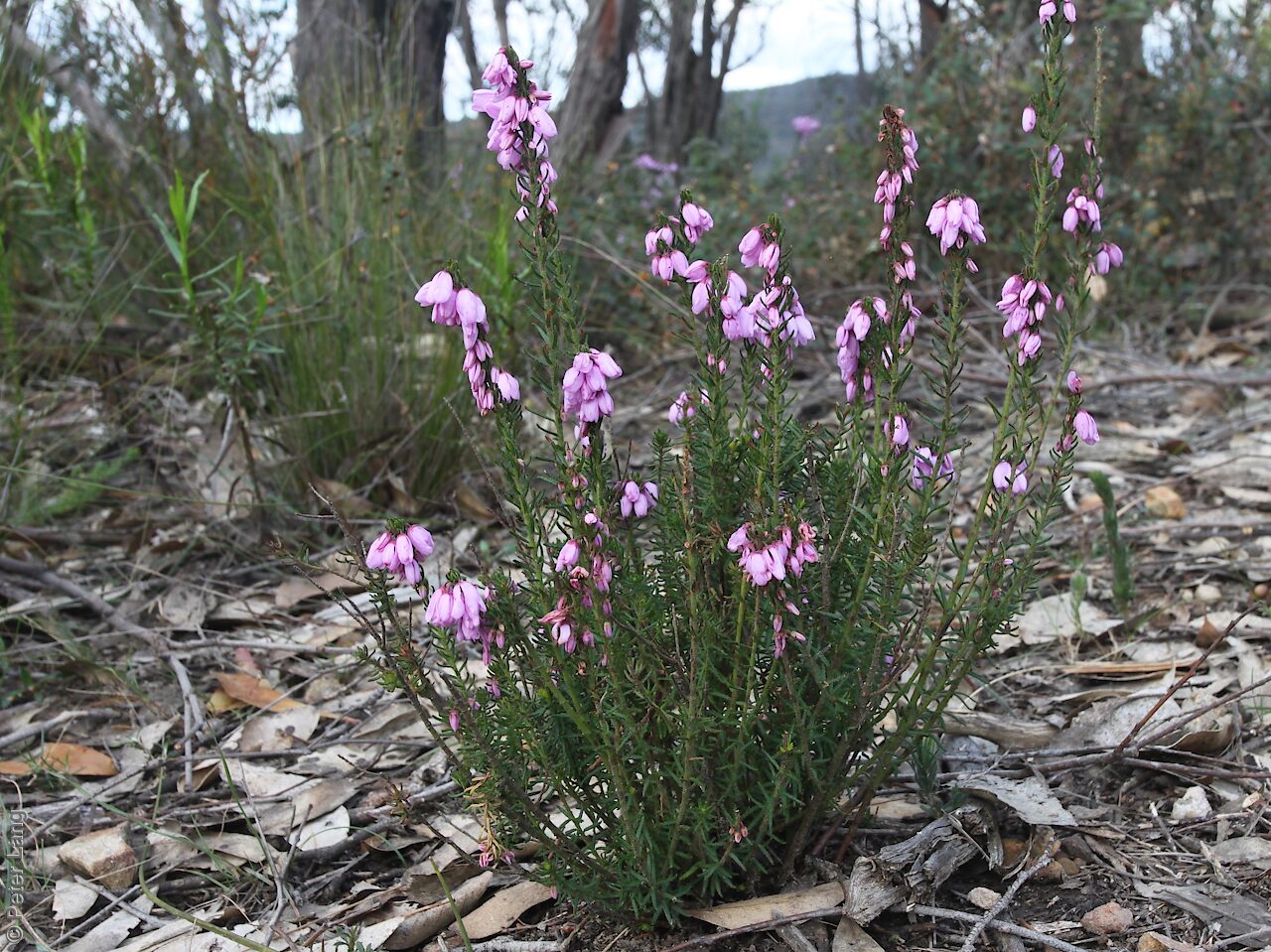
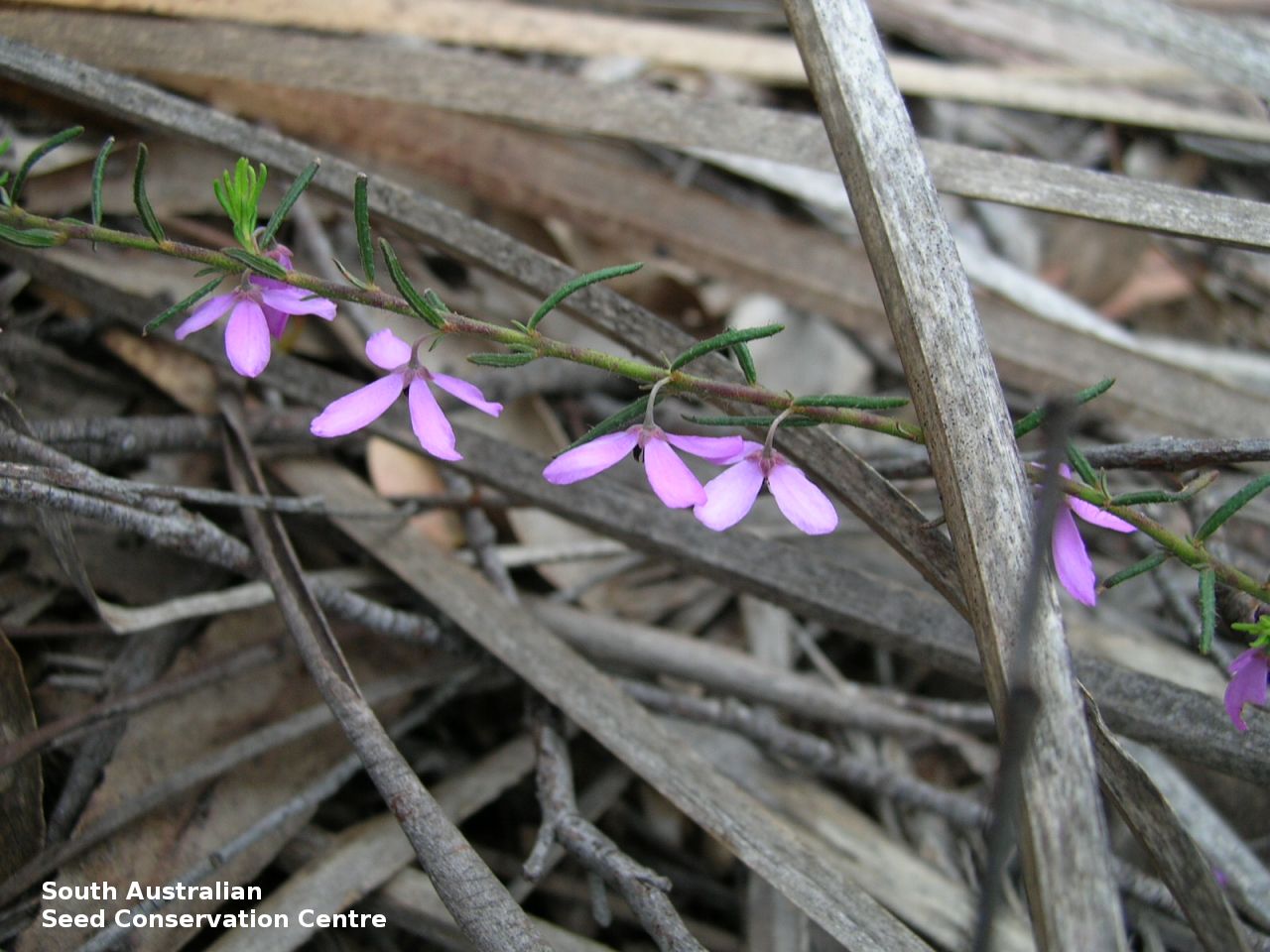
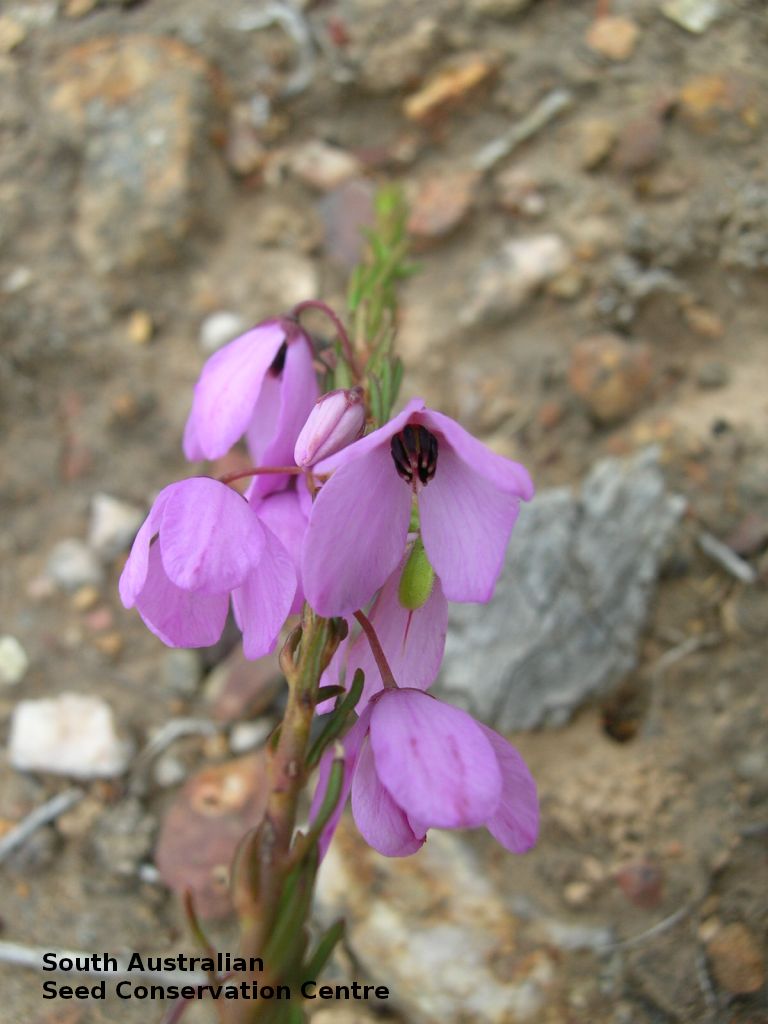
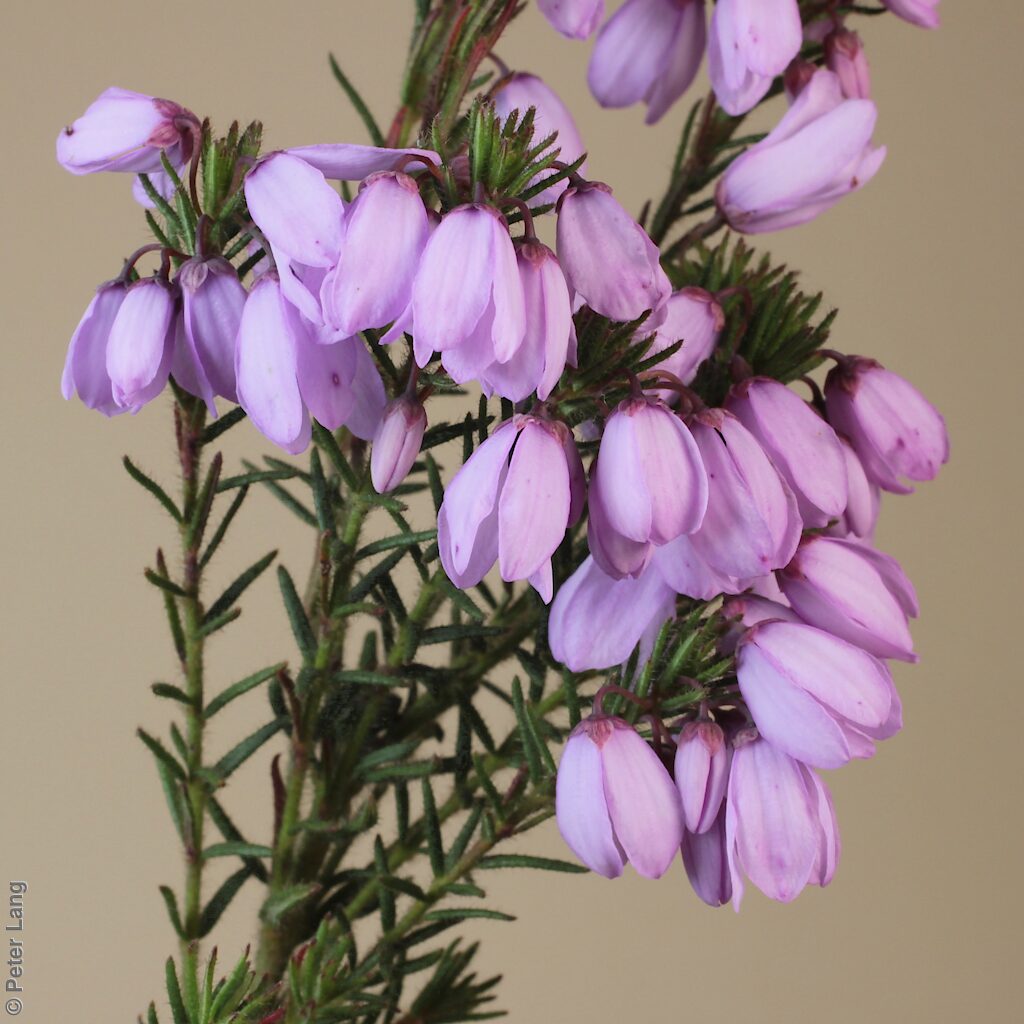
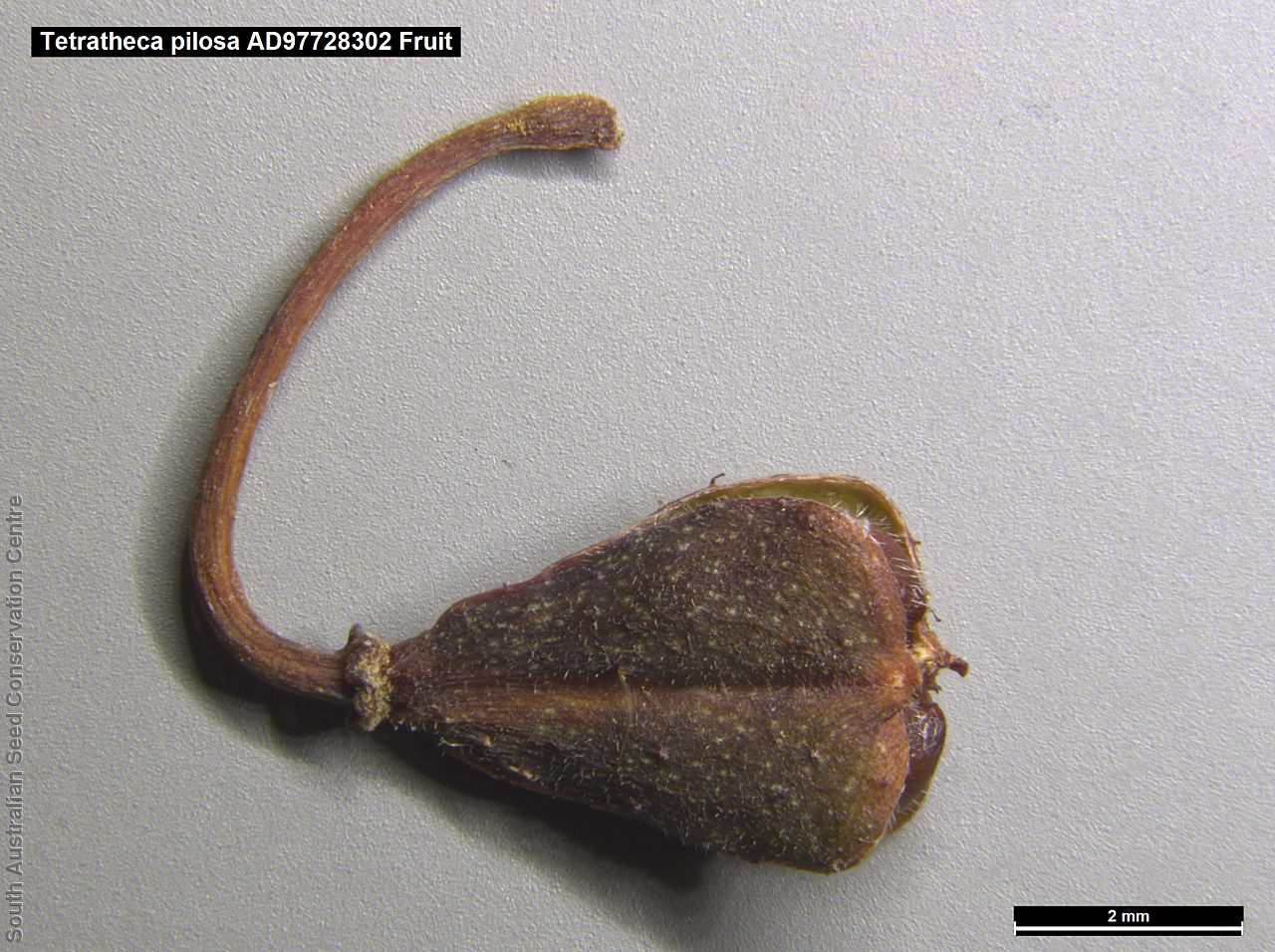
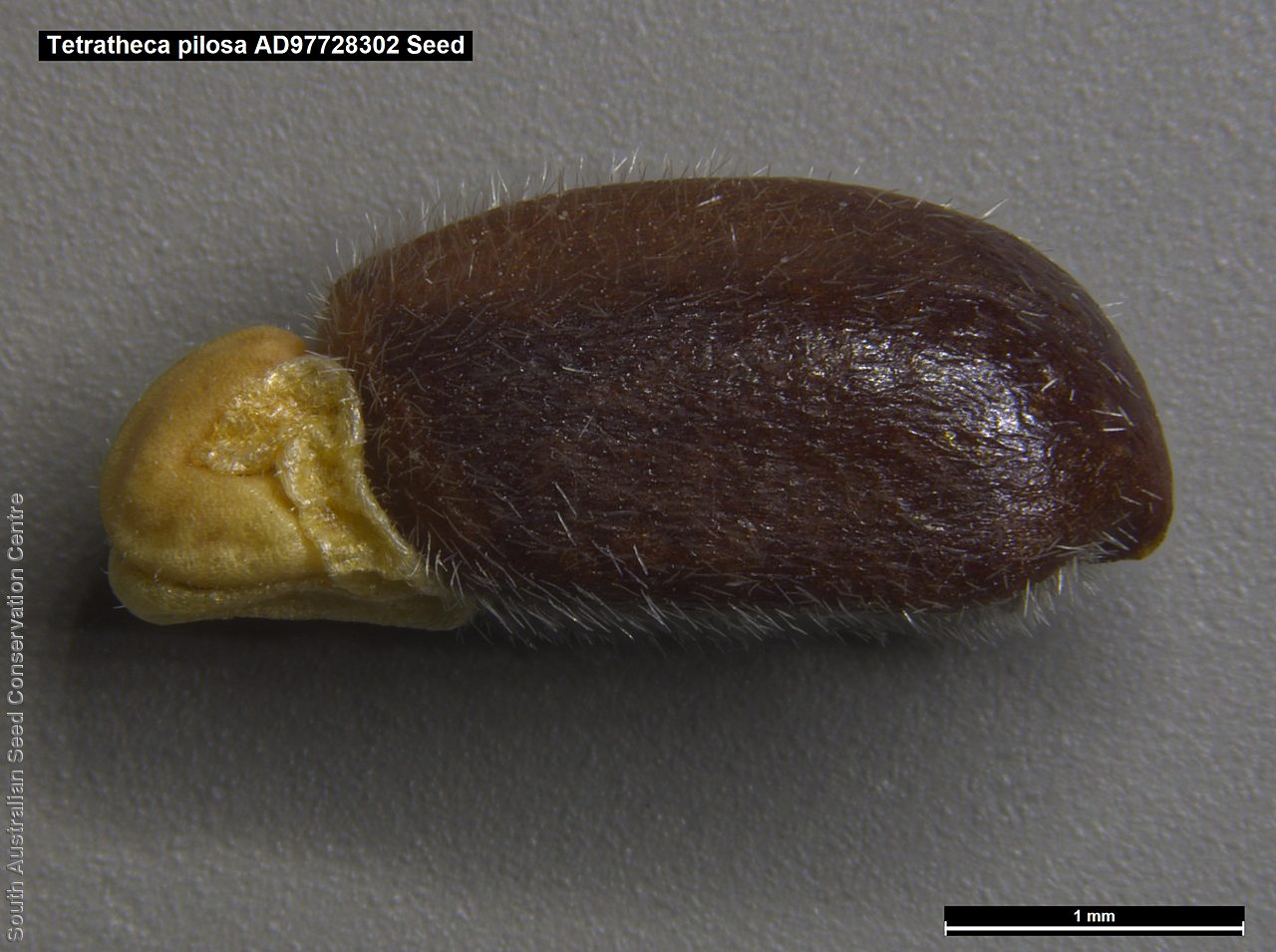
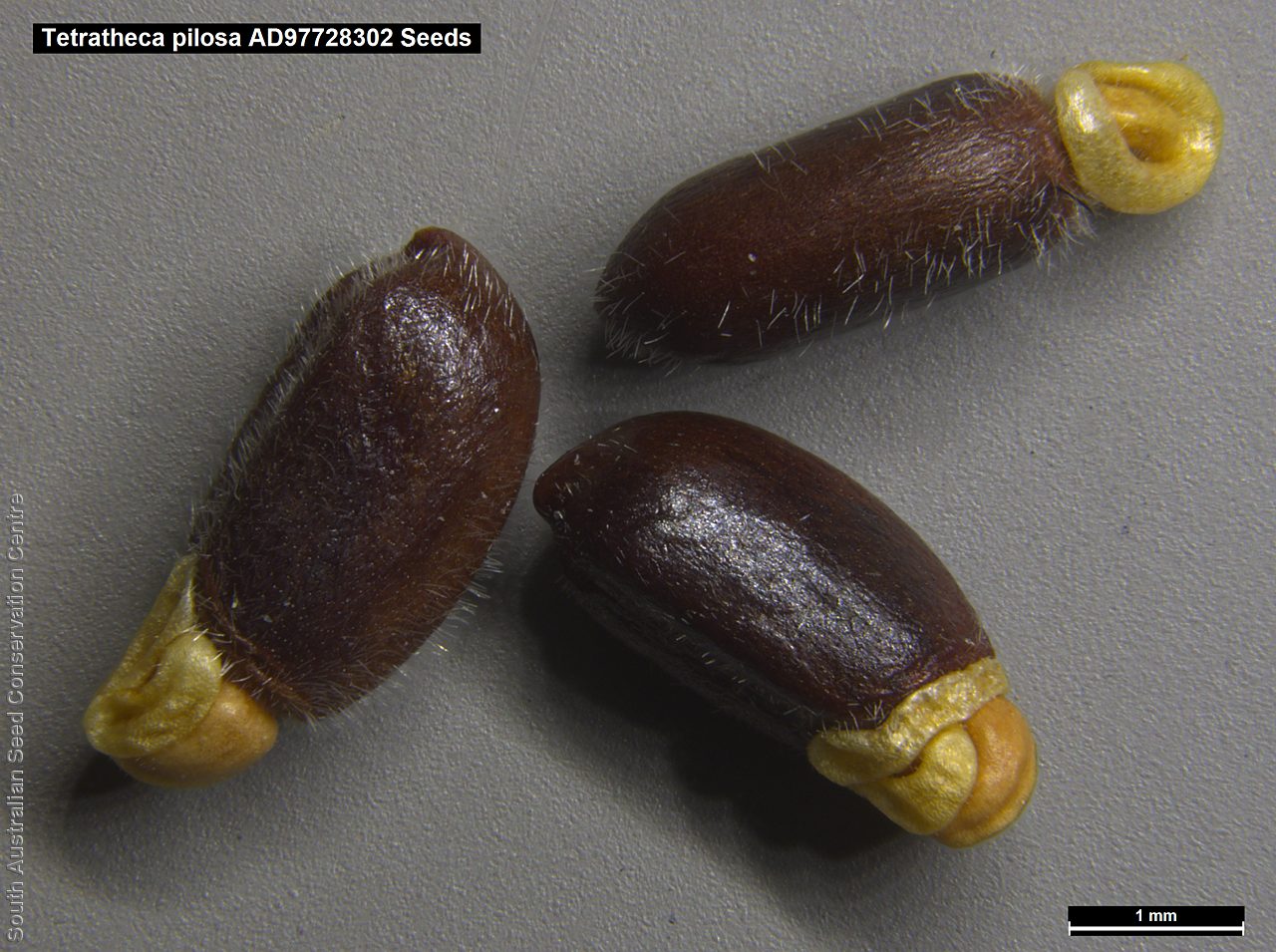
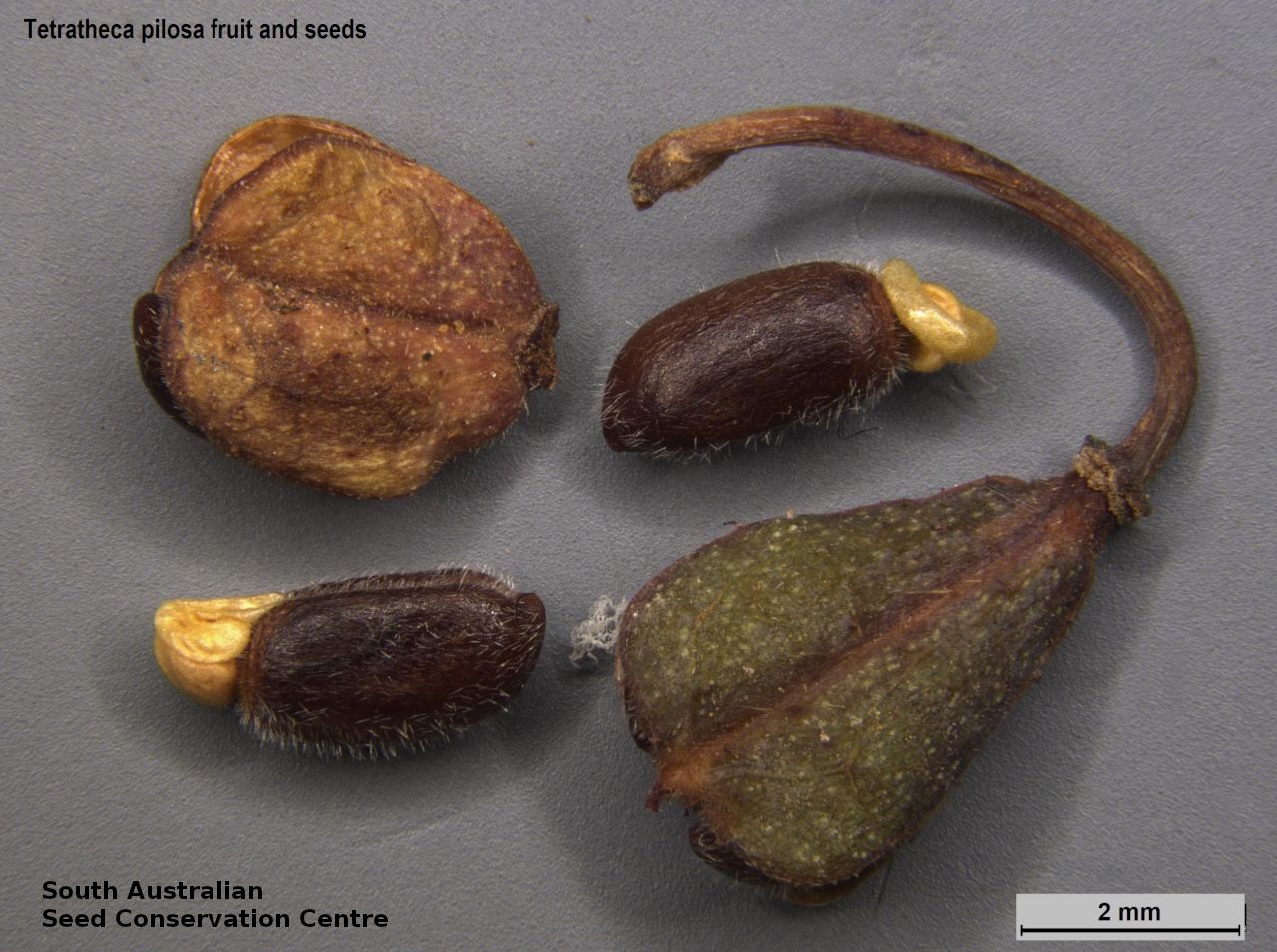


Botanical art
Prior names
Tetratheca pilosa ssp. pilosa
Common names
Pink-eyed Susan
Hairy Pink-bells
Etymology
Tetratheca from the Greek 'tetra' meaning four; and 'theke' meaning case; referring to the 4 anther-loculi, the anthers are often four-lobed or four-celled. Pilosa from the Greek 'pilosus' meaning covered in long, soft hairs.
Distribution and status
Found mainly in the southern Mount Lofty Ranges and in the upper South-east in South Australia, growing in heathland and sclerophyll forest. Also found in New South Wales, Victoria and Tasmania. Native. Common in South Australia. Common in the other states.
Herbarium regions: Murray, Southern Lofty, South Eastern, Green Adelaide
NRM regions: Adelaide and Mount Lofty Ranges, South Australian Murray-Darling Basin, South East
AVH map: SA distribution map (external link)
Plant description
Erect or spreading shrub to 60 cm high, arising from a root stock with stems covered in tubercles and on younger growth short hairs. Leaves usually alternate but occasionally opposite, linear to narrowly ovate, to 15 mm long and 1 mm wide, margins revolute often over the midrib, or recurved, apex blunt or with a short pungent point. Inflorescences single or rarely 2 together in the upper axils with dark- or pale-pink or white bell-shaped flowers, sepals 4, petals 4, stamens 8, body of the anther glabrous or with small hairs, tapering into tube with a narrow or broad orifice, ovary usually with scattered glandular hairs. Flowering between September to November. Fruits are brown ovoid capsule to 5 mm long and about two-thirds as wide, often beaked. Seeds are dark brown cylindrical seed to 3 mm long and 1.5 mm wide, covered in scattered hairs and with a cream appendage.
Seed collection and propagation
Collect seeds between October and January. Collect maturing capsules those that are fat, turning a pale brown and contain hard dark seeds. Place the capsules in a tray and leave to dry for a week. Then rub the dried capsules gently by hand to dislodge the seeds. Use a sieve to separate the unwanted material. Store the seeds with a desiccant such as dried silica beads or dry rice, in an air tight container in a cool and dry place.